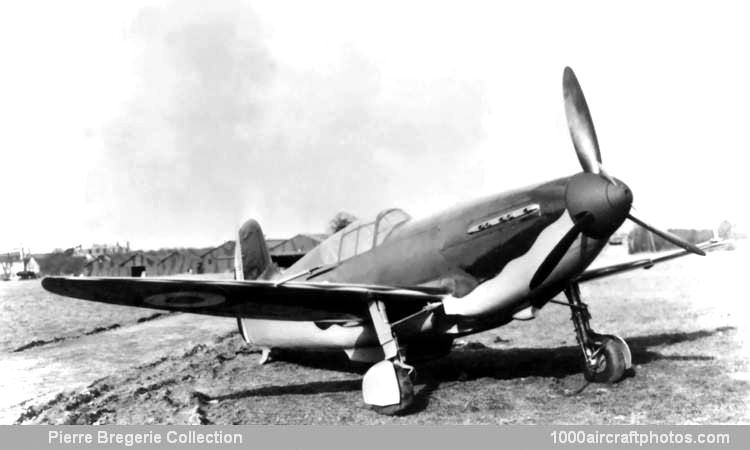10/31/2010. Remarks by Johan Visschedijk: "Prior to the nationalization of ANF-Mureaux in 1937 as a part of the SNCA du Nord, this company had produced a series of single-seat fighters which included the ANF-Mureaux 170, 180 and 190. The ANF-Mureaux 190 was a light-weight all-metal interceptor with a fixed landing gear and powered by a 450 hp Salmson 12Vars twelve-cylinder air-cooled inverted V-engine, and the prototype was flown for the first time in 1936.
With the absorption of ANF-Mureaux by the SNCA du Nord, Messrs. Brunet (the former ANF-Mureaux chief designer), Lemaitre and Hubert, continued the development of the ANF-Mureaux line of lightweight fighters at the former Potez-CAMS factory at Sartrouville, and in the autumn of 1938 began work on the Potez 230 which was a logical development of the ANF-Mureaux 190 featuring numerous refinements and a more powerful engine.
The Potez 230 employed a similar wing planform to that of the earlier fighter, the wing comprising two semi-elliptic sections which were attached at four points on the fuselage center line. The leading and trailing edges of the wing were attached to a torsion box of integral construction-the first of its type to be flown-and hydraulically-operated split flaps were attached to the trailing edges. The oval section fuselage was built up of four longerons and a number of open-section frames, the forward section being covered by removable metal panels and the rear section having stressed skinning.
Power was provided by an Hispano-Suiza 12Xcrs twelve-cylinder liquid-cooled engine rated at 670 hp at 13,123 ft (4,000 m) driving a Ratier airscrew, and the legs of the main Messier landing gear members contracted as they retracted so that the main wheels lay flat in fuselage wells.
Flight tests with the Potez 230 commenced at Villacoublay on March 30, 1940, the first flight lasting 20 minutes, with test pilot Georges Détré at the controls.
Only minor teething troubles were encountered during the initial test phase, and on May 8, 1940, after modifications to the coolant water pump and some softening of the landing gear shock absorbers which had previously interrupted the fuel supply to the carburetors when the aircraft was taxiing over rough ground, the prototype attained speeds of 273 mph (440 kmh) at sea level and 348 mph (560 kmh) at 16,404 ft (5,000 m). The proposed installation of the more powerful Hispano-Suiza 12Y engine would, it was estimated, have resulted in a maximum speed of 391 mph (629 kmh).
When German forces occupied Villacoublay in June 1940, they discovered the Potez 230 intact, and an RLM technical team, interested in the integral structure of the wing torsion box, had the prototype ferried to a German test center, and seized all drawings and data related to the machine's construction."
